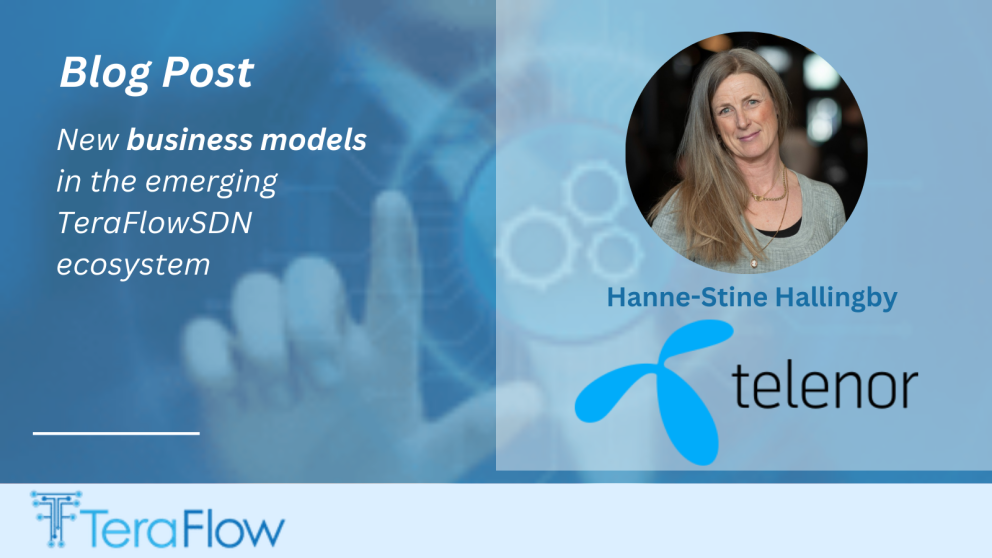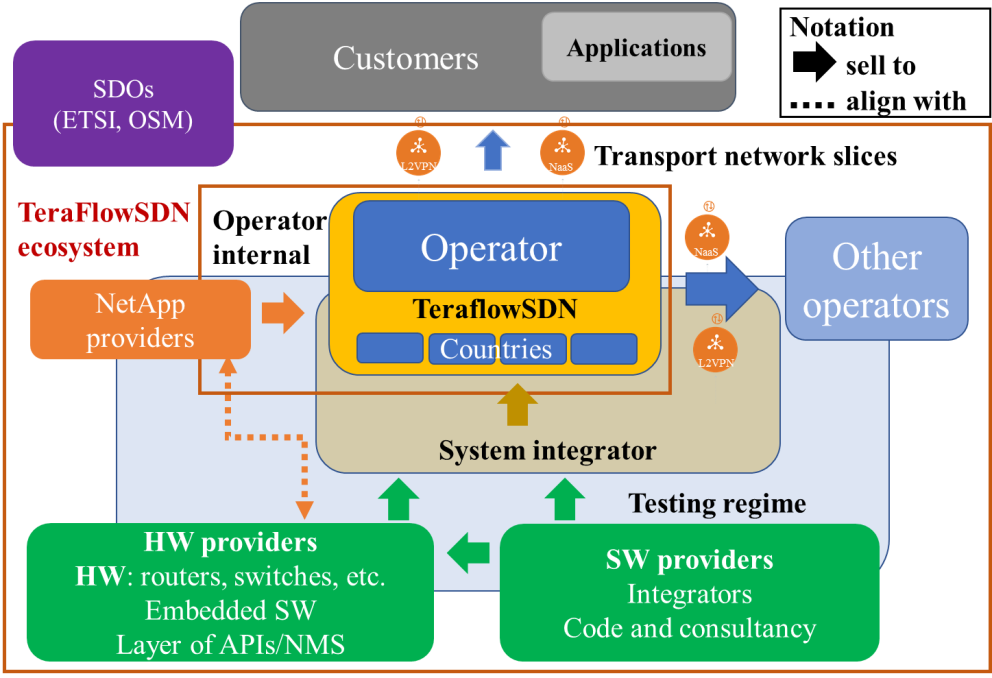In the future ecosystem emerging from and for TeraFlowSDN, the system integrator will probably play a significant role. This is an important finding from TeraFlow’s analyses of business value propositions, collaborating roles in an ecosystem, and subsequent business models. The analyses build on in-depth interviews of TeraFlow partners, modelling, and workshops in several iterations.
Recent posts
TeraFlow has provided the open-source network controller TeraFlowSDN. It aims to drive the market toward full compatibility to address current problems with operators’ lock-in to vendors’ proprietary HW, SW, and network management systems. TeraFlowSDN promises network operators a better cost position and not the least, higher flexibility, and innovation capabilities.
The intended disaggregation of a currently integrated system will lead to an increase in technological components which in turn can be recombined. Also, many different business roles will have to be filled in order to deliver a well-functioning transport network, as illustrated in figure. In this new market context, we have suggested that system integration may become increasingly important for handling the reintegrating of components into stable and scalable networks.
To deploy a transport network, network operators can choose to do the system integration themselves. There are also good reasons for an operator to purchase system integration as a service from other roles. Our research suggests that system integrators provide one important value proposition to network operators, which is to carry risk for network functioning according to predefined levels. The system integrator may also deliver one point of failure-support.
In the TeraFlow Deliverable D2.2 we explore several existing and new roles in the TeraFlowSDN ecosystem. It is critical to build roles for pre-testing and certification to enable efficient provisioning of independent HW and SW components. We also observe that bare-metal HW providers can serve the market well with a value proposition which focuses on efficient logistics, SW-onboarding, and pre-configuring of equipment before it reaches its destination.
The evolution of TeraFlowSDN business models and ecosystems is subject to many uncertainties partly due to self-reinforcing effects. In our final analytic iteration, we developed a model for ecosystem dynamics, documented in the TeraFlow deliverable D6.4. Key causal loops are self-reinforcing or self-balancing the TeraFlowSDN ecosystem, e.g., network effects, switching costs, and lock-in effects. In other words, even in a system which is intended to be fully compatible, there is no straightforward paths to the future market.
Our findings address business models and ecosystems for an open-source controller for the transport network. However, we suggest that the findings are relevant also for other telecommunication domains which are subject to disaggregation and full compatibility. We may find similar new and changing business roles, value propositions, business models, and ecosystem dynamics for the mobile core or RAN. In general, the system integrator and its value proposition will play a significant role both towards the network operator as a customer, but also towards vertical customers in for instance the manufacturing industry. Our main contributions are a better understanding of how an ecosystem could evolve over time when technologies are disintegrated, and indications for where current actors can find business opportunities and reposition themselves.


